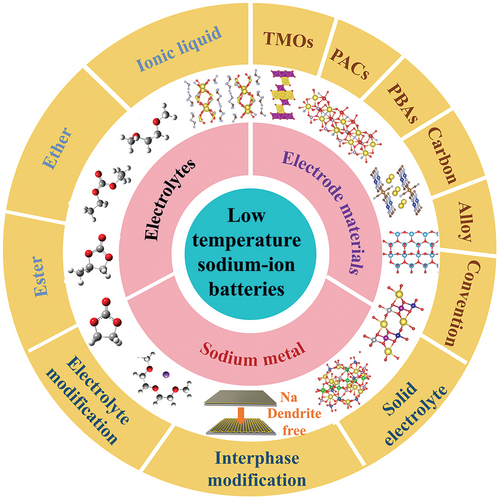

With the gradual penetration of lithium-ion batteries in social scenarios, the price of upstream resources related to lithium-ion batteries is gradually rising, which cannot meet the demand for stationary energy storage. Sodium-ion batteries have similar energy storage mechanisms and abundant sodium metal resources as lithium-ion batteries, and have broad application prospects in large-scale grid energy storage, low-speed electric vehicles and other fields.Sodium-ion batteries have come a long way over the past few decades, especially in the development of batteries with excellent cycle stability and high-rate performance. Predictably, the low-temperature performance of sodium-ion batteries has been challenged by the dramatic growth in demand for large-scale grid energy storage, aerospace and marine exploration, and defense applications. Sodium-ion batteries also have advantages over lithium-ion batteries in terms of low temperature and fast charging performance. The Stokes diameter of sodium-ion is smaller than that of lithium-ion, and electrolytes of the same concentration have higher ionic conductivity than lithium salt electrolytes. Higher ionic diffusion capability and higher ionic conductivity mean that Sodium-ion batteries have better rate performance as well as higher power output and acceptance.

1. Sodium-ion batteries have better high and low temperature performance.
At a low temperature of -40 °C, more than 70% of the capacity can be released, and at a high temperature of 80 °C, it can be used for cyclic charging and discharging, which will reduce the power quota of the air conditioning system at the energy storage system level, and can also reduce the online time of the temperature control system, thereby reducing the one-time investment cost and operation cost of the energy storage system.
2. Sodium ions have better interfacial ion diffusion ability.
At the same time, the Stokes diameter of sodium ion is smaller than that of lithium ion, and the electrolyte of the same concentration has a higher ionic conductivity than that of lithium salt electrolyte, and the higher ionic diffusion capacity and higher ionic conductivity mean that the rate performance of sodium-ion batteries is better, and the power output and acceptance capacity are stronger.
3. In terms of safety and environmental protection, sodium electricity has a strong competitive advantage.
In terms of safety, due to the relatively high internal resistance of sodium-ion batteries, the instantaneous heat generation in the event of short circuit is smaller than that of lithium batteries, and the temperature rise is relatively low, which has higher safety. In contrast, the lead and acid components contained in lead-acid batteries will cause pollution to the environment, so the environmental protection is poor.
Conclusion
With its have better high and low temperature performance, Sodium ions have better interfacial ion diffusion ability,safety and environmental protection, and versatile applications, this battery offers exceptional performance, reliability, and durability. Choose VTC Power as your trusted partner for all your battery needs.